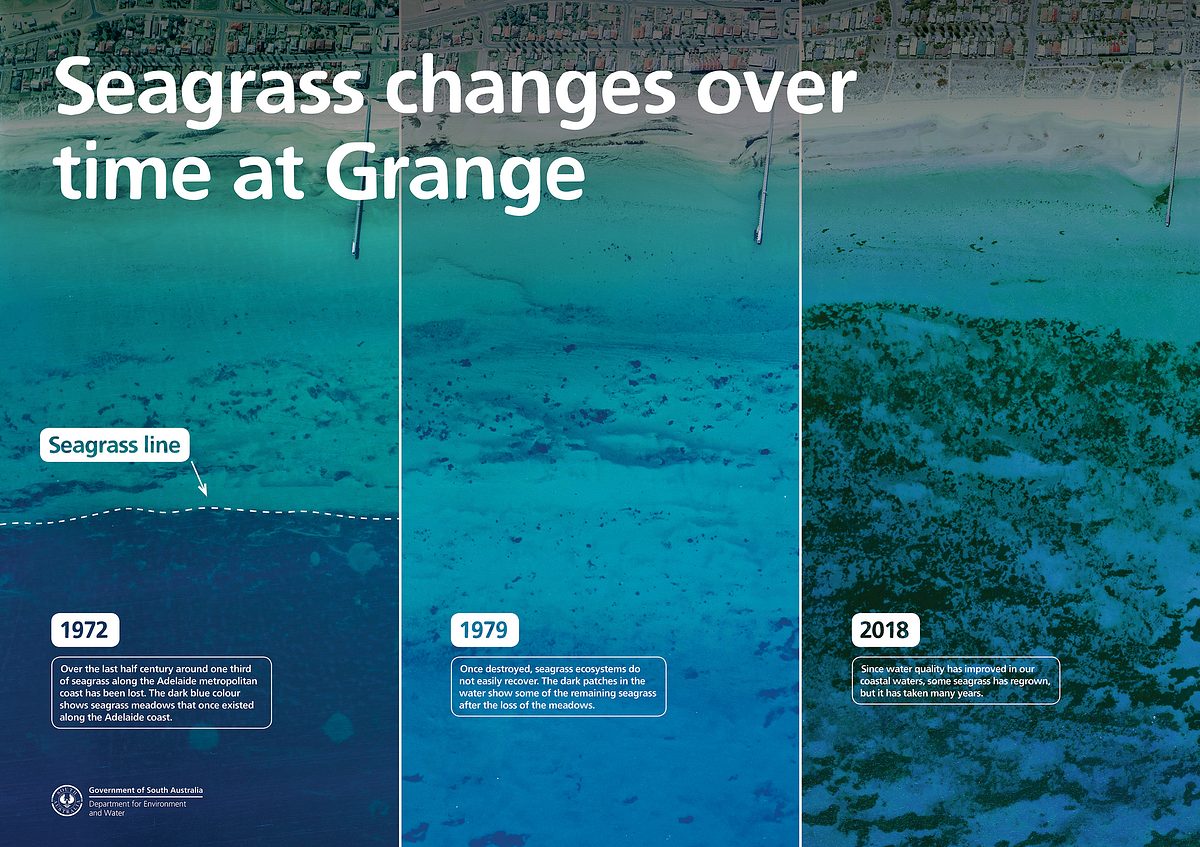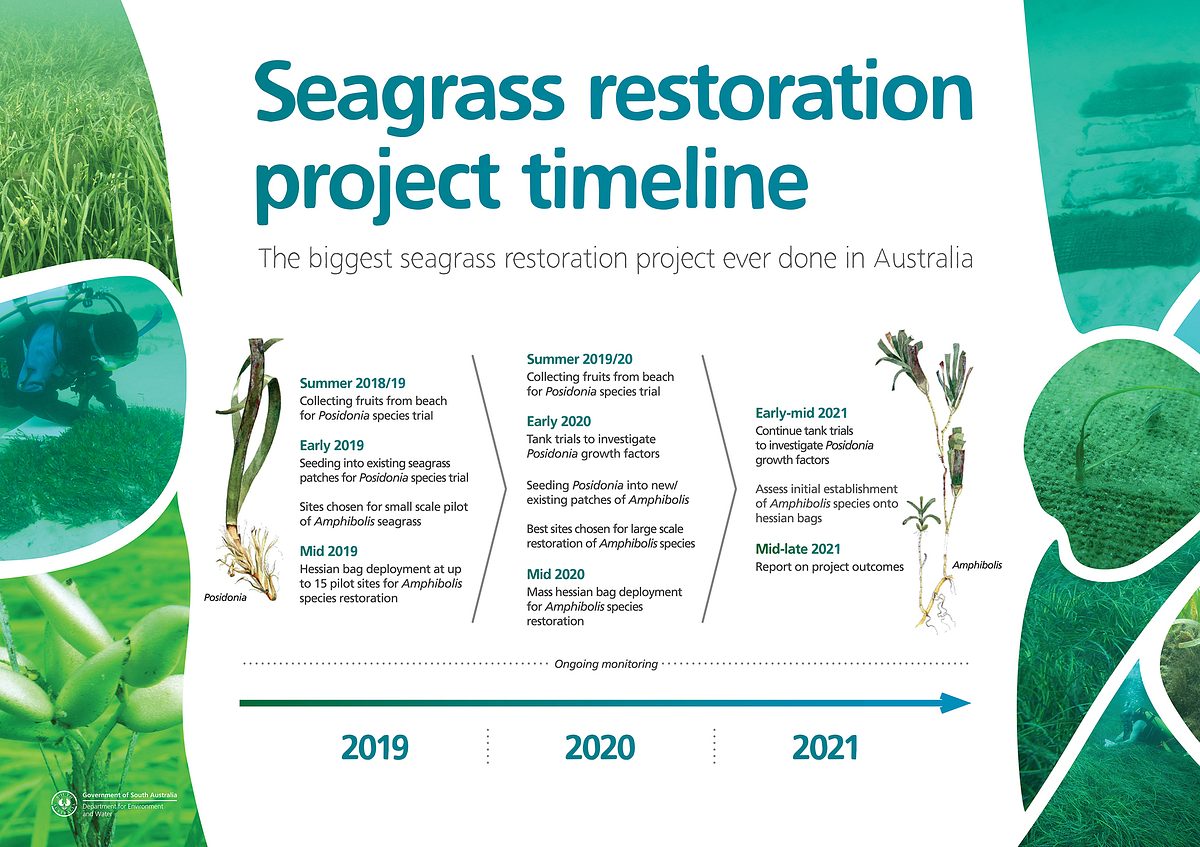Australia’s biggest seagrass restoration project is happening in SA
Did you know?
- Seagrass are marine flowering plants that evolved from land plants and adapted to marine life around 100 million years ago.
- Around 40 times more animals inhabit seagrass than in adjacent bare sand
- Eleven species of seagrasses are known to grow in South Australia covering an area of approximately 9,620 km2.
- One hectare of seagrass is estimated to be worth more than $26,000 per year, making seagrass one of the most valuable ecosystems on the planet.
- Per hectare, seagrasses can store up to twice as much carbon than terrestrial forests and play an important role in reducing global greenhouse gas emissions. There are potential long term blue carbon opportunities in seagrass restoration.
Explore
- Know your seagrass from your seaweed
- 10 things to look for when beachcombing
- 5 mistaken identities along SA’s beaches
- What is seagrass wrack?
Take action
- Get involved in the Seeds for Snapper initiative to collect seeds on the beach that are used to restore seagrass meadows.
- For boat owners: operate your boat in marked channels to prevent running aground and damaging your boat and seagrass beds. When in doubt about the depth, slow down and idle. If you are leaving a muddy trail behind your boat, you are probably cutting seagrass.
The largest seagrass restoration project in Australia is happening in South Australia which aims to re-establish around 10 hectares of seagrass off the Adelaide metropolitan coast.
The biggest seagrass restoration trial in Australia is being done in SA
Seagrass meadows are very important to the nearshore coastal environment. They help stabilise the seabed by holding sand with their roots and reduce the waves and currents near the seabed with their leaves. They also provide both food and habitat for marine life.
Over the last half century, around one third of seagrass along the Adelaide metropolitan coast has been lost.
While natural events such as storms can cause large-scale seagrass loss, the main cause of the initial seagrass loss was poor water quality resulting from drain discharge, stormwater run-off and effluent disposal.
Once destroyed, seagrass ecosystems do not easily recover as waves and currents erode the exposed seabed and inhibit regrowth.

Seagrass changes over time at Grange (view as PDF)
As seagrass is not easily able to re-establish in bare sand, the seagrass restoration project uses a technique developed in South Australia of placing hessian bags on the sea floor to hold seagrass seedlings in place. By the time the hessian decomposes, many seedlings are sufficiently established.
Trials have been undertaken between Largs Bay and Hove to identify suitable sites for large scale restoration work to be undertaken in 2021. It will take several years for the seagrass to fully establish. The restoration will be monitored to measure and report on progress over time.

Seagrass restoration project timeline (view as PDF) Note that the large scale restoration was undertaken in 2021.
The project is being delivered by the South Australian Research Development Institute in partnership with our department and will inform future seagrass restoration work.


